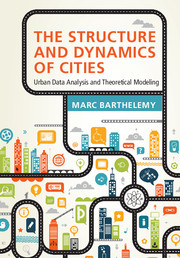Book contents
2 - Models and methods
Published online by Cambridge University Press: 10 November 2016
Summary
Statistical physics of complex systems
The beginning of statistical physics can be traced back to thermodynamics in the nineteenth century. The field is still very active today, with modern problems occurring in out-of-equilibrium systems. The first problems (up to c. 1850) were to describe the exchange of heat through work and to define concepts such as temperature and entropy. A little later many studies were devoted to understanding the link between a microscopic description of a system (in terms of atoms and molecules) and a macroscopic observation (e.g., the pressure or the volume of a system). The concepts of energy and entropy could then be made more precise, leading to an important formalization of the dynamics of systems and their equilibrium properties.
More recently, during the twentieth century, statistical physicists invested much time in understanding phase transitions. The typical example is a liquid that undergoes a liquid-to-solid transition when the temperature is lowered. This very common phenomenon turned out, however, to be quite complex to understand and to describe theoretically. Indeed, this type of “emergent behavior” is not easily predictable from the properties of the elementary constituents and as Anderson (1972) put it: ”… the whole becomes not only more than but very different from the sum of its parts.” In these studies, physicists understood that interactions play a critical role: without interactions there is usually no emergent behavior, since the new properties that appear at large scales result from the interactions between constituents. Even if the interaction is “simple,” the emergent behavior might be hard to predict or describe. In addition, the emergent behavior depends, not on all the details describing the system, but rather on a small number of parameters that are actually relevant at large scales (see for example Goldenfeld 1992).
Statistical physics thus primarily deals with the link between microscopic rules and macroscopic emergent behavior and many techniques and concepts have been developed in order to understand this translation – among them the notion of relevant parameters, but also the idea that at each level of description of a system there is a specifically adapted set of tools and concepts.
- Type
- Chapter
- Information
- The Structure and Dynamics of CitiesUrban Data Analysis and Theoretical Modeling, pp. 25 - 46Publisher: Cambridge University PressPrint publication year: 2016



